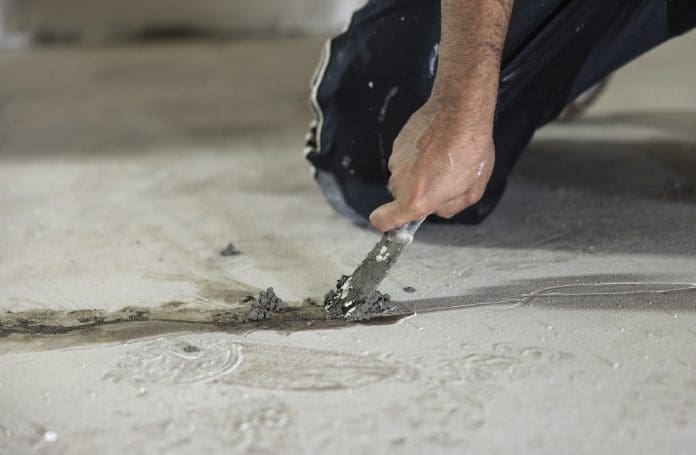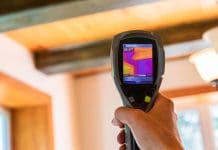In this article, PBC Today explores the importance of groundwater risk assessment in basement waterproofing design
Deep-seated in the realm of basement waterproofing design is the paramount importance of groundwater risk assessment.
When executed meticulously, this process yields benefits by paving the way for a cost-effective waterproofing system and determining the applicability of BS8485’s simple ground gas risk assessment design approach.
The focus on groundwater extends beyond mere location and depth, including potential risks such as vapour intrusion resulting from hydrocarbon contamination.
Furthermore, comprehending constraints in the application of external drainage systems becomes evident.
Adding another layer to this scenario is the presence of contamination like dissolved methane, which highlights the need for intrinsically safe pumps in cavity drains.
In instances where basements lie beneath groundwater tables, BS8485 proves unsuitable, thus necessitating further consideration of material durability.
Why is groundwater risk assessment critical?
The significance of groundwater risk assessment in basement waterproofing design lies in its ability to facilitate the creation of a cost-effective waterproofing system, determine the suitability of existing standards for ground gas risk evaluation like BS8485, and assess potential vapour intrusion risks from hydrocarbon contamination.
Furthermore, it aids in identifying effective discharge options, which are crucial for basement external drainage systems.
Groundwater management is, therefore, an integral part of designing a sustainable and reliable waterproofing system that ensures longevity and safeguards against any potential environmental hazards.
An informed approach to the design process can be achieved by carefully assessing groundwater conditions and understanding of ground gas movement below and above the groundwater table.
This knowledge allows engineers to develop cost-effective solutions tailored to the site’s unique challenges.
A thorough risk assessment will reveal whether simple designs such as those proposed by BS8485 are applicable or if more complex methods are required. Similarly, it will indicate if standard membrane materials will suffice or if more durable materials are needed due to contaminants present.
Moreover, an accurate understanding of groundwater flow rates is essential when considering discharge options for basement waterproofing systems.
Exceedingly high flow rates may surpass sustainable drainage (SuDS) design parameters, limiting where external drainage can be provided; only locations with available soakaways or watercourses would be suitable for discharge under these circumstances.
Without comprehensive groundwater assessments and considerate application of their findings within the design approach, effective mitigative strategies cannot be developed nor implemented appropriately within construction projects involving basements.
What are the external drainage considerations?
External drainage systems for subterranean structures play a pivotal role in managing hydrostatic pressure and ensuring the longevity of waterproofing measures.
They are designed to lower the hydrostatic pressure on the waterproofing system, thus playing a crucial role in maintaining its effectiveness.
However, these systems have their limitations, particularly concerning discharge options.
Due to regulatory constraints, water companies generally do not permit groundwater to be drained into public sewers. Furthermore, the groundwater flow may exceed the allowable discharge rates set out in sustainable drainage (SuDS) design principles.
Consequently, the location or availability of drainages becomes an essential consideration when implementing external drainage options.
The table below outlines some important factors that should be considered when designing external basement drains:
| External drainage considerations | Explanation |
| Discharge Limitations | The maximum rate at which water can safely be discharged from an external drain |
| Sustainable Drainage Design | A design approach aimed at reducing surface water runoff and promoting natural filtration |
| Location Constraints | Availability of appropriate sites for effective soaking or discharge |
| Groundwater Flow Rates | The speed at which groundwater moves through soil or rocks |
The implications of these considerations are significant for projects where basements are located below the groundwater table or in regions prone to heavy rainfall or high water tables – circumstances where groundwater flow rates could be excessively high.
Therefore, such assessments and designs should only be undertaken by qualified ground engineering professionals who understand these complexities well enough to develop feasible solutions within given constraints.
This ensures optimal performance and minimises risks associated with potential damage due to excess water pressure against basement walls and floors over time.
Contamination and risk analysis
Contamination intrusion and related risk analysis are crucial when planning subterranean construction projects.
This is particularly true for basement waterproofing design, where groundwater penetration can undermine the project’s structural integrity and introduce potential contaminants into the building space.
Therefore, proper assessment of risks and hazards posed by contamination forms an integral part of overall groundwater management in such constructions.
- One of the key steps in managing these risks involves conducting a thorough risk assessment to determine whether contaminants such as hydrocarbons or ground gases like methane or carbon dioxide are present in the vicinity.
- Depending on their nature and concentration, these contaminants could pose significant health risks if they migrate into the basement via gas/vapour phase above the groundwater or dissolved phase below it.
- The rate at which groundwater flows can also impact contamination levels, especially when it exceeds allowable discharge rates used in sustainable drainage (SuDS) design.
- Lastly, appropriate risk mitigation measures must be put in place, including installing intrinsically safe pumps for cavity drains where dissolved methane is present or selecting durable materials that come into contact with contaminants.
The importance of this comprehensive approach towards contamination prevention cannot be overstated. Its consequences could potentially escalate beyond mere structural damage to hazardous health implications for occupants of spaces built within contaminated environments.
Assessments must be conducted by qualified ground engineering professionals who employ appropriate risk assessment methods, ensuring accuracy and effectiveness over time.
Failure to adequately address contamination intrusion could prove costly financially and in terms of human safety, making it a critical consideration during basement waterproofing design and construction processes.
Materials and durability
In subterranean construction, careful selection and evaluation of materials for their longevity and resilience against contaminants is a fundamental aspect that directly influences the success and safety outcomes of the project.
The performance characteristics of various waterproofing materials need to be meticulously studied with ground gases and hydrocarbon contamination.
Membrane durability is a key measure of its ability to withstand adverse conditions without significant deterioration.
Notably, these materials must have high resistance against degradation from exposure to groundwater contaminants while maintaining their waterproofing properties.
The effectiveness of basement waterproofing systems depends on the compatibility between the chosen material and site-specific ground conditions involving potential ground gas or hydrocarbon contamination.
Understanding this interplay requires an accurate risk assessment examining how different substances may interact with these systems.
For instance, if methane or other dissolved gases are present in groundwater, it may impact specific types of membranes or cavity drains negatively, causing premature failure or reduced functionality.
Therefore, comprehensive risk assessments help identify suitable materials to ensure long-term efficiency and safety in such environments.

















